Hyundai Santa Fe vs Land Rover Range Rover – Differences & prices compared
Compare performance, boot capacity, efficiency and price at a glance.
Find out which car is the better choice for you – Hyundai Santa Fe or Land Rover Range Rover?
Costs and Efficiency:
Looking at overall running costs, both models reveal some interesting differences in everyday economy.
Hyundai Santa Fe has a convincingly advantage in terms of price – it starts at 51200 £, while the Land Rover Range Rover costs 122700 £. That’s a price difference of around 71528 £.
Fuel consumption also shows a difference: Hyundai Santa Fe manages with 1.70 L and is therefore convincingly more efficient than the Land Rover Range Rover with 2.70 L. The difference is about 1 L per 100 km.
As for range, the Land Rover Range Rover performs clearly better – achieving up to 117 km, about 63 km more than the Hyundai Santa Fe.
Engine and Performance:
Power, torque and acceleration say a lot about how a car feels on the road. This is where you see which model delivers more driving dynamics.
When it comes to engine power, the Land Rover Range Rover has a decisively edge – offering 615 HP compared to 253 HP. That’s roughly 362 HP more horsepower.
In acceleration from 0 to 100 km/h, the Land Rover Range Rover is convincingly quicker – completing the sprint in 4.50 s, while the Hyundai Santa Fe takes 9 s. That’s about 4.50 s faster.
In terms of top speed, the Land Rover Range Rover performs distinct better – reaching 261 km/h, while the Hyundai Santa Fe tops out at 196 km/h. The difference is around 65 km/h.
There’s also a difference in torque: Land Rover Range Rover pulls significantly stronger with 800 Nm compared to 380 Nm. That’s about 420 Nm difference.
Space and Everyday Use:
Whether family car or daily driver – which one offers more room, flexibility and comfort?
Both vehicles offer seating for 7 people.
In curb weight, Hyundai Santa Fe is evident lighter – 1920 kg compared to 2504 kg. The difference is around 584 kg.
In terms of boot space, the Land Rover Range Rover offers slightly more room – 818 L compared to 711 L. That’s a difference of about 107 L.
In maximum load capacity, the Land Rover Range Rover performs barely noticeable better – up to 2176 L, which is about 144 L more than the Hyundai Santa Fe.
When it comes to payload, Land Rover Range Rover evident takes the win – 846 kg compared to 665 kg. That’s a difference of about 181 kg.
Who wins the race?
The Land Rover Range Rover proves to be wins the duel decisively and therefore becomes our DriveDuel Champion!
Land Rover Range Rover is the better all-rounder in this comparison.
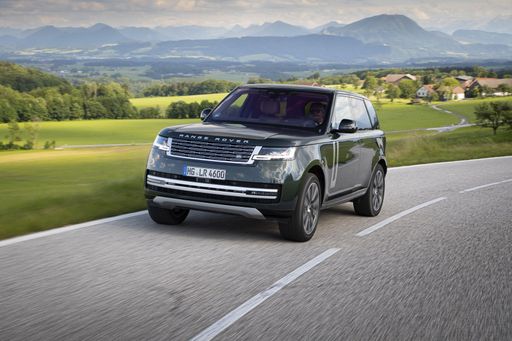
Land Rover Range Rover
Hyundai Santa Fe
The Hyundai Santa Fe offers a refined blend of style and functionality, making it a strong contender in the SUV market. Its modern interior, combined with advanced technology and comfort features, creates an inviting and practical driving environment. With its sleek design and robust performance, the Santa Fe is well-suited for both urban commutes and family adventures.
details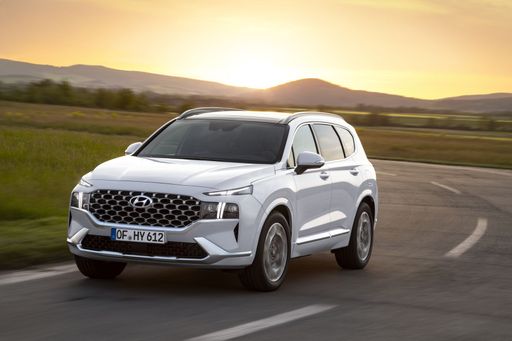 @ hyundai.news
@ hyundai.news
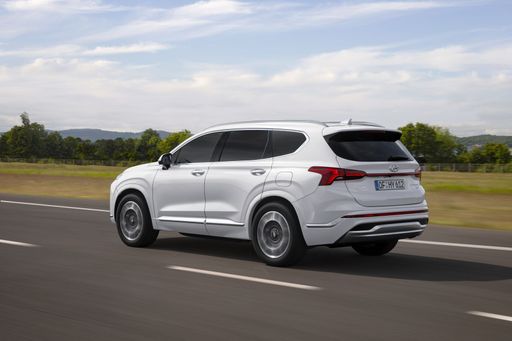 @ hyundai.news
@ hyundai.news
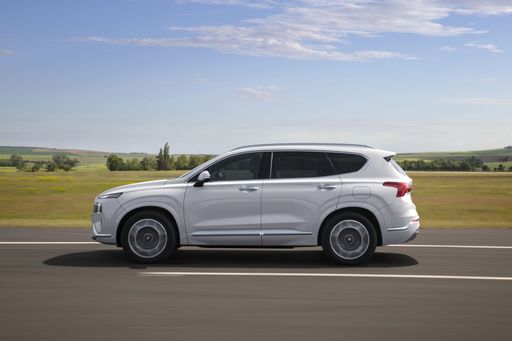 @ hyundai.news
@ hyundai.news
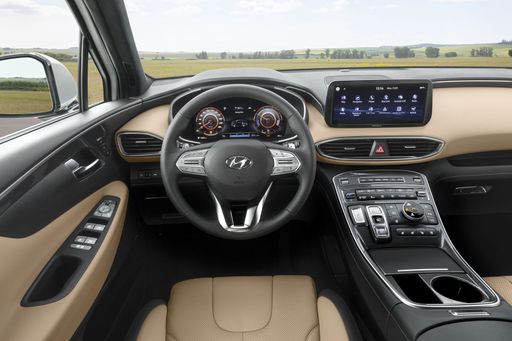 @ hyundai.news
@ hyundai.news
 @ hyundai.news
@ hyundai.news
Land Rover Range Rover
The Land Rover Range Rover epitomises luxury and capability in the realms of off-road vehicles. Its elegant design seamlessly marries sophistication with ruggedness, making it equally suitable for urban environments and challenging terrains. Inside, passengers are treated to a plush interior with premium materials and cutting-edge technology that ensure a comfortable and connected driving experience.
details @ media.landrover.com
@ media.landrover.com
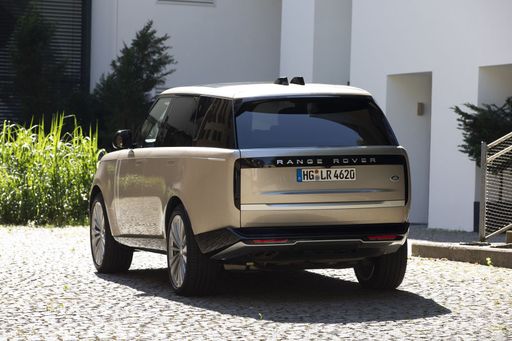 @ media.landrover.com
@ media.landrover.com
 @ media.landrover.com
@ media.landrover.com
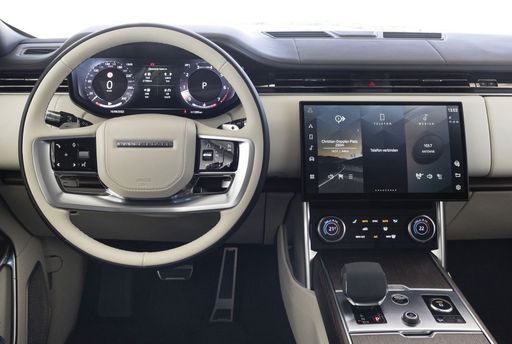 @ media.landrover.com
@ media.landrover.com

|

|
|
|
|
Costs and Consumption |
|
|---|---|
|
Price
51200 - 58400 £
|
Price
122700 - 244700 £
|
|
Consumption L/100km
1.7 - 7.1 L
|
Consumption L/100km
2.7 - 11.7 L
|
|
Consumption kWh/100km
-
|
Consumption kWh/100km
-
|
|
Electric Range
54 km
|
Electric Range
116 - 117 km
|
|
Battery Capacity
-
|
Battery Capacity
31.80 kWh
|
|
co2
38 - 160 g/km
|
co2
62 - 265 g/km
|
|
Fuel tank capacity
47 - 67 L
|
Fuel tank capacity
71 - 90 L
|
Dimensions and Body |
|
|---|---|
|
Body Type
SUV
|
Body Type
Off-Roader
|
|
Seats
5 - 7
|
Seats
5 - 7
|
|
Doors
5
|
Doors
5
|
|
Curb weight
1920 - 2165 kg
|
Curb weight
2504 - 2810 kg
|
|
Trunk capacity
621 - 711 L
|
Trunk capacity
212 - 818 L
|
|
Length
4830 mm
|
Length
5052 - 5258 mm
|
|
Width
1900 mm
|
Width
2047 mm
|
|
Height
1720 mm
|
Height
1870 mm
|
|
Max trunk capacity
1942 - 2032 L
|
Max trunk capacity
1841 - 2176 L
|
|
Payload
560 - 665 kg
|
Payload
589 - 846 kg
|
Engine and Performance |
|
|---|---|
|
Engine Type
Plugin Hybrid, Full Hybrid
|
Engine Type
Plugin Hybrid, Petrol MHEV, Diesel MHEV
|
|
Transmission
Automatic
|
Transmission
Automatic
|
|
Transmission Detail
Automatic Gearbox
|
Transmission Detail
Automatic Gearbox
|
|
Drive Type
All-Wheel Drive, Front-Wheel Drive
|
Drive Type
All-Wheel Drive
|
|
Power HP
239 - 253 HP
|
Power HP
300 - 615 HP
|
|
Acceleration 0-100km/h
9 - 9.3 s
|
Acceleration 0-100km/h
4.5 - 6.6 s
|
|
Max Speed
180 - 196 km/h
|
Max Speed
218 - 261 km/h
|
|
Torque
367 - 380 Nm
|
Torque
650 - 800 Nm
|
|
Number of Cylinders
4
|
Number of Cylinders
6 - 8
|
|
Power kW
176 - 186 kW
|
Power kW
221 - 452 kW
|
|
Engine capacity
1598 cm3
|
Engine capacity
2997 - 4395 cm3
|
General |
|
|---|---|
|
Model Year
2024 - 2025
|
Model Year
2025
|
|
CO2 Efficiency Class
B, E, F
|
CO2 Efficiency Class
B, G
|
|
Brand
Hyundai
|
Brand
Land Rover
|
What drivetrain options does the Hyundai Santa Fe have?
Available configurations include All-Wheel Drive or Front-Wheel Drive.
The prices and data displayed are estimates based on German list prices and may vary by country. This information is not legally binding.
